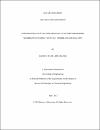OPTIMIZING PILOT-SCALE PERFORMANCE OF SUPERHYDROPHOBIC MEMBRANES BY DIRECT-CONTACT MEMBRANE DISTILLATION
| Advisor | Khraisheh, Majeda |
| Advisor | Hassan, Mohammad |
| Author | ABDELRAZEQ, HANEEN WADI |
| Available date | 2023-07-06T08:51:15Z |
| Publication Date | 2023-06 |
| Abstract | Membrane technology is a promising approach that offers effective solutions for treating saline wastewater, not only to meet the discharge standard, but also to offer the opportunities for water reuse. This study highlights the unique features and limitations of membrane processes for treating saline wastewater and identifies the existing research gaps areas for improvement in produced water treatment based on related literature in direct contact membrane distillation (DCMD). This research is aligned with the latest innovative wastewater technologies and play a significant role in investigating the impact of synthetic brine on electropsun polystyrene and commercial polyethylene membranes using a bench-scale set-up, a high-tech DCMD pilot module, as well as optimization and numerical predictions using Python. The effect of varying brine concentrations on the desalination performance, the energetic performance and the long-term impact of membrane fouling provides insights that are difficult to achieve through conventional bench-scale systems. Based on experimental results, an optimized iterative method was used to reduce the error between the estimated and actual surface membrane temperature to predict the temperature accurately in each experiment. The research findings highlight the effect of porosity on the efficiency of the pilot unit with emphasis on thermal and evaporation efficiency. |
| Language | en |
| Subject | Membrane technology treating saline wastewater water reuse direct contact membrane distillation (DCMD) |
| Type | Dissertation |
| Department | Chemical Engineering |
Files in this item
This item appears in the following Collection(s)
-
Chemical Engineering [4 items ]


